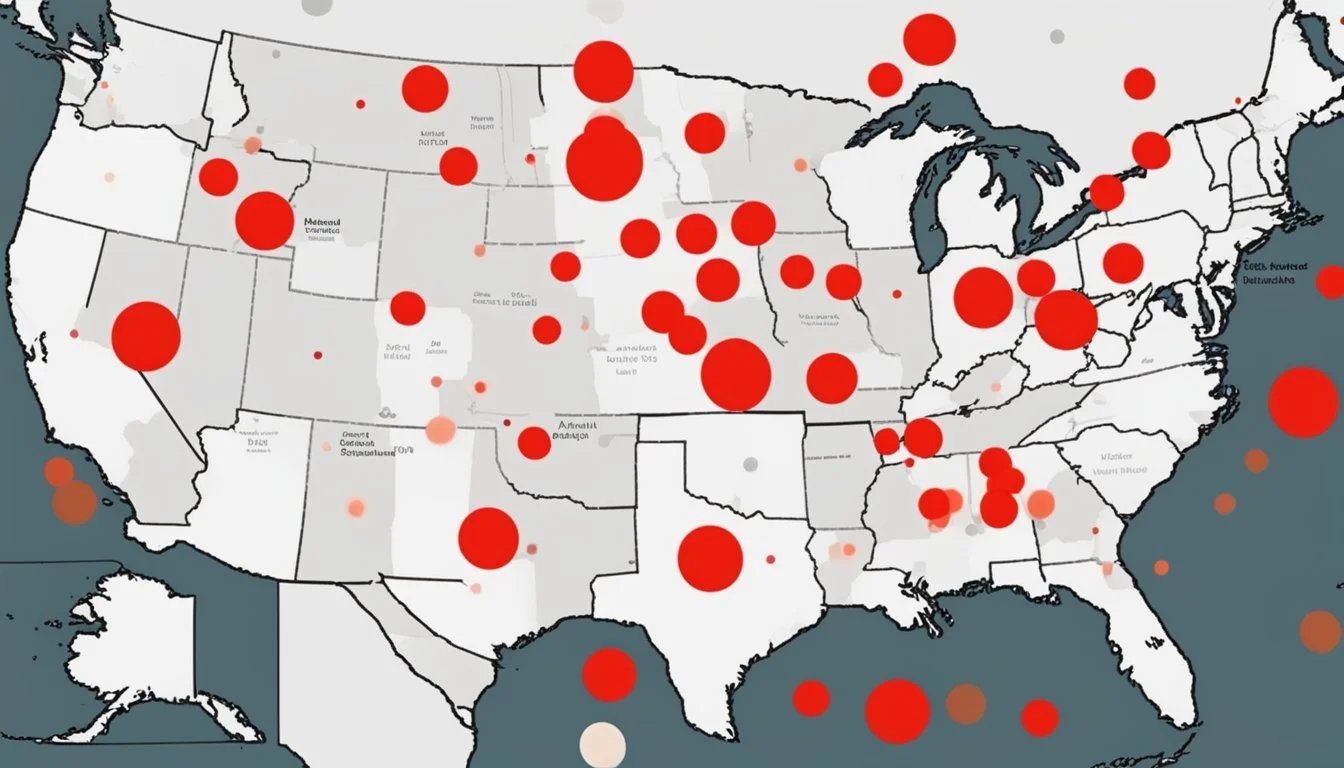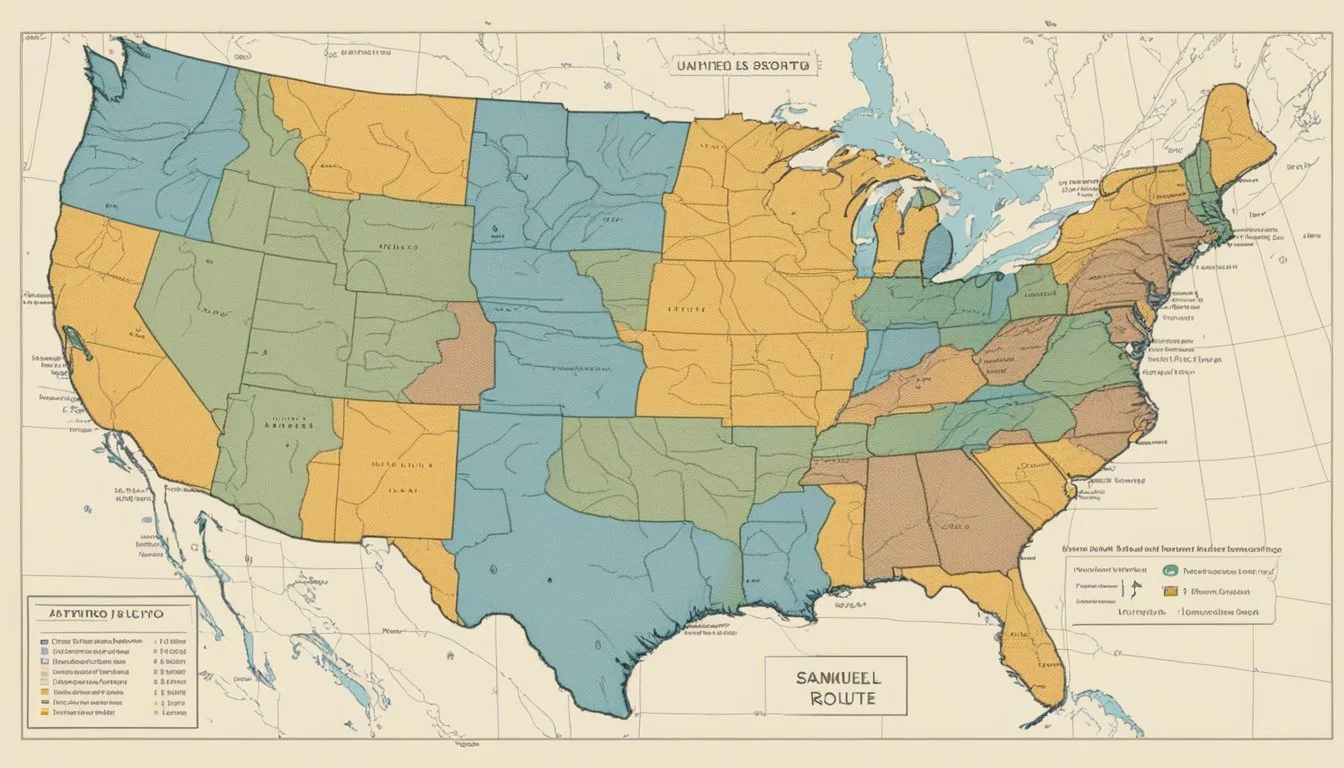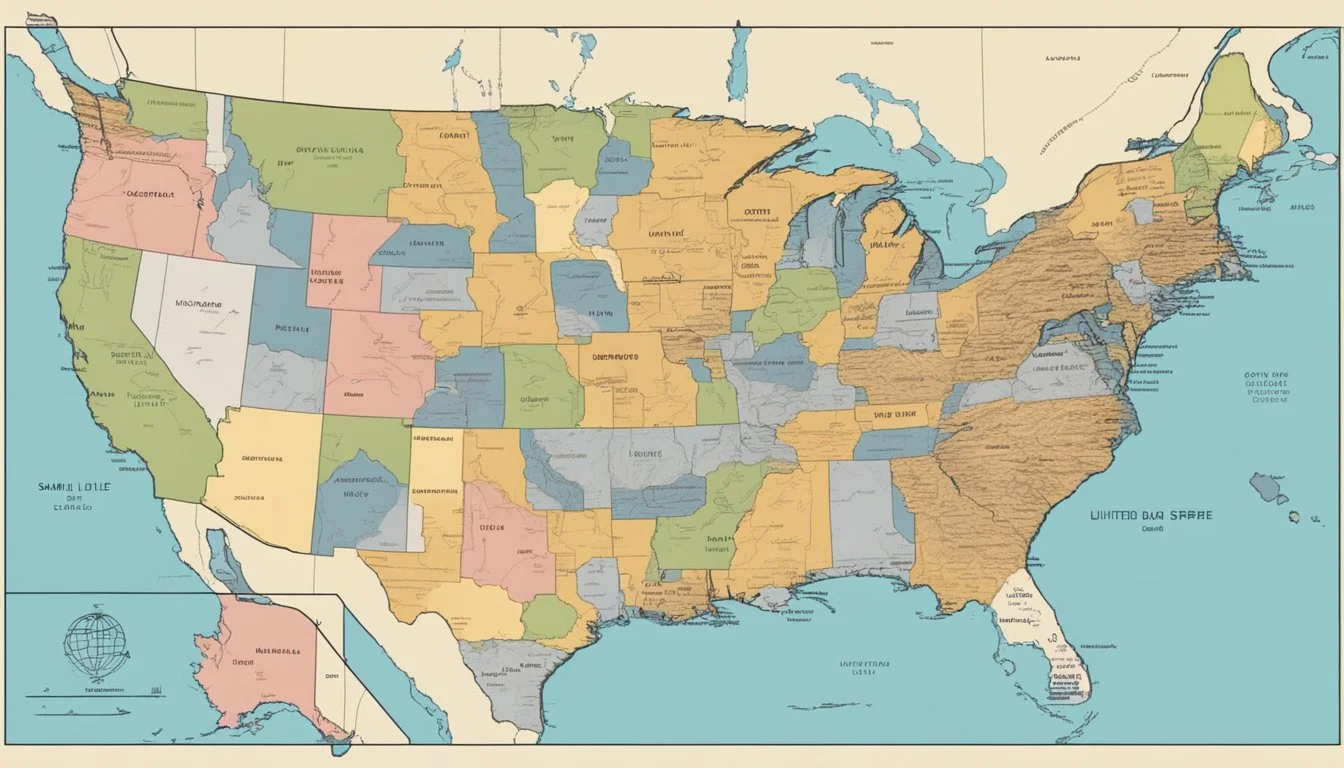America's Deadliest: Samuel Little's Cross-Country Killing Spree
Unmasking a Serial Killer's 40-Year Rampage
Samuel Little, dubbed America's most prolific serial killer, left a trail of death across the United States for over three decades. From 1970 to 2005, Little targeted vulnerable women, primarily from marginalized communities, in states spanning from California to Florida. His confessions to 93 murders shocked law enforcement and the public, revealing the true extent of his horrific crimes.
Little's ability to evade capture for so long exposed significant flaws in the criminal justice system. He often preyed on individuals whose disappearances went unnoticed or uninvestigated, allowing him to continue his killing spree undetected. His victims included sex workers, drug addicts, and other women on the fringes of society.
The FBI's investigation into Little's crimes uncovered a disturbing pattern of violence that spanned multiple decades and jurisdictions. His confessions, coupled with his ability to create detailed sketches of his victims, helped close numerous cold cases and bring a measure of closure to families who had long wondered about the fate of their loved ones. Little's case serves as a chilling reminder of the devastating impact of serial killers and the importance of thorough investigative work in bringing them to justice.
Profile of a Killer: Samuel Little
Samuel Little emerged as America's most prolific serial killer, confessing to 93 murders across the country between 1970 and 2005. His nomadic lifestyle and choice of marginalized victims allowed him to evade capture for decades.
Early Life and Criminal Beginnings
Born on June 7, 1940, in Georgia, Samuel Little had a troubled upbringing. He was raised primarily by his grandmother in Ohio. Little's criminal activities began in his teens with petty thefts and assaults.
By the 1960s, he had progressed to more serious crimes. Little spent time in and out of prison for various offenses, including armed robbery and assault. These early encounters with law enforcement foreshadowed his future as a serial killer.
Little's nomadic lifestyle started in his youth. He moved frequently across the United States, making it difficult for authorities to track his movements or connect his crimes.
Methods and Choice of Victims
Little targeted primarily marginalized women, often those involved in prostitution or struggling with drug addiction. This choice of victims made his crimes less likely to be thoroughly investigated or connected.
His preferred method of murder was strangulation. Little's physical strength, honed through his past as a competitive boxer, allowed him to overpower his victims easily.
Little's attacks typically followed a pattern. He would lure women into his car, often with the promise of drugs or money. Once isolated, he would strangle them and dispose of their bodies in remote areas.
His nomadic lifestyle played a crucial role in his ability to commit murders across multiple states without detection. Little moved frequently, never staying in one place long enough to arouse suspicion.
A Timeline of Terror
Samuel Little's reign of terror spanned decades and stretched across multiple states. His crimes left a trail of devastation that went largely undetected for years.
The 1980s: A Decade of Violence
The 1980s marked a period of intensified criminal activity for Samuel Little. He targeted vulnerable women in various locations, often selecting victims from marginalized communities.
In California, Little committed numerous murders, particularly in Los Angeles. He also carried out killings in Texas and Florida during this decade.
Little's modus operandi involved strangling his victims, which made his crimes difficult to detect as homicides. This method, combined with his transient lifestyle, allowed him to evade capture for years.
From State to State: Geographic Range of Crimes
Little's crimes extended far beyond a single state, creating a complex web of unsolved cases across the country. He confessed to murders in 37 cities spanning multiple states.
His victims ranged from a 16-year-old boy in Jackson, Mississippi, to a 50-year-old woman in Los Angeles. Little's extensive travel made it challenging for law enforcement to connect the dots between his crimes.
States where Little committed murders include:
California
Texas
Florida
Ohio
Mississippi
Final Arrest and Conviction
After decades of evading justice, Little's reign of terror finally came to an end. In 2012, he was arrested at a Kentucky homeless shelter on drug charges.
DNA evidence linked Little to three unsolved murders in Los Angeles from the 1980s. He was extradited to California and convicted of these crimes in 2014, receiving three consecutive life sentences.
In October 2019, the FBI confirmed Samuel Little as "the most prolific serial killer in U.S. history." Little continued to confess to additional murders while in prison, providing details about 93 victims.
Little died on December 30, 2020, in a California prison, leaving behind a legacy of horror and many unanswered questions.
Investigation Breakthroughs
Advancements in technology, FBI involvement, and skilled interviewing techniques played crucial roles in cracking Samuel Little's decades-long killing spree. These elements combined to unravel one of America's most complex serial murder cases.
Role of Technology in Solving Cold Cases
DNA evidence proved instrumental in linking Little to several unsolved murders. As forensic techniques improved, investigators revisited old crime scenes and evidence, extracting genetic profiles that were unavailable during initial investigations. These profiles were then compared to Little's DNA, providing concrete connections to multiple victims.
Crime analysts utilized advanced database systems to identify patterns across states. This technology allowed them to connect seemingly unrelated cases, revealing Little's extensive geographical range and modus operandi.
FBI's Crucial Involvement and VICAP
The FBI's Violent Criminal Apprehension Program (VICAP) was pivotal in the investigation. VICAP's comprehensive database of violent crimes helped investigators identify potential victims and track Little's movements across the country.
FBI agents collaborated with local law enforcement agencies, sharing resources and information. This coordinated effort led to the discovery of additional victims and helped build a stronger case against Little.
James Holland's Interviews: A Turn in the Case
Texas Ranger James Holland's skilled interrogation techniques proved crucial in obtaining Little's confessions. Holland built rapport with Little over extensive interviews, encouraging him to share details about his crimes.
Holland's patient approach and ability to connect with Little resulted in the serial killer creating detailed sketches of his victims. These drawings provided valuable leads for investigators working on unresolved cases across multiple states.
The interviews also revealed Little's remarkable memory for victim details, helping law enforcement identify previously unknown victims and solve long-cold cases.
Profiles of the Lost
Samuel Little's victims were predominantly women from marginalized communities, often involved in sex work or struggling with addiction. Many remained unidentified for decades, their stories untold and their lives undervalued by society.
Remembering the Victims
Little targeted vulnerable women across the United States. His victims included sex workers, transgender individuals, and those battling substance abuse. In Jackson, Mississippi, he preyed on women from disadvantaged neighborhoods. Mary Brosley, discovered in a shallow grave, was one of Little's early victims. Her death in 1971 went unsolved for decades.
Little's method of killing - strangulation - often left little evidence, making it difficult to connect his crimes. He deliberately chose victims whose disappearances might not be noticed or thoroughly investigated.
Unidentified Victims and the Jane Doe Cases
Many of Little's victims remain unidentified. These "Jane Doe" cases highlight the challenges in solving crimes against marginalized individuals. Law enforcement struggles to put names to these victims due to:
Lack of missing person reports
Limited DNA evidence
Incomplete records for transient populations
The FBI's Violent Criminal Apprehension Program (ViCAP) has confirmed Little's involvement in at least 60 murders, but many cases remain open. Efforts continue to identify these women and bring closure to their families.
Legal Proceedings and Sentencing
Samuel Little faced multiple trials and convictions for his heinous crimes. His time behind bars culminated in life sentences before his death in 2020.
Trial and Convictions
In 2014, Little stood trial in Los Angeles for three murders committed in the 1980s. DNA evidence linked him to the crimes, leading to his conviction. The court sentenced Little to three consecutive life terms without the possibility of parole.
Little's confessions to 93 murders across the country sparked further investigations. Law enforcement agencies in various states worked to corroborate his claims. As a result, Little faced additional charges and convictions in Texas and Ohio.
Prosecutors in Texas secured a guilty plea from Little for the 1994 strangulation of Denise Christie Brothers. He received another life sentence for this crime.
Life Behind Bars and Death
Little spent his final years incarcerated at California State Prison in Los Angeles County. During this time, he cooperated with authorities, providing detailed information about his victims.
His confessions helped close numerous cold cases across the United States. Little's memory for details, despite his advanced age, proved invaluable to investigators.
In December 2020, Samuel Little died at the age of 80. The California Department of Corrections reported his death was due to natural causes. Little had been suffering from diabetes and heart problems in his later years.
Comparative Analysis
Samuel Little's prolific murder spree stands out in American true crime history. His crimes spanned decades and crossed state lines, presenting unique challenges for law enforcement and researchers.
Samuel Little vs. Other Notorious Serial Killers
Samuel Little confessed to 93 murders, surpassing the known victim counts of other infamous American serial killers. Gary Ridgway, the Green River Killer, was convicted of 48 murders but confessed to 71.
Little's victim selection differed from many serial killers. He primarily targeted marginalized women, often involved in sex work or struggling with addiction. This choice of victims contributed to his ability to evade detection for decades.
Unlike some serial killers who operated in specific geographic areas, Little's crimes spanned the country. This wide-ranging pattern complicated efforts to connect his murders and delayed his capture.
The Impact on American True Crime History
Little's case reshaped understanding of long-term serial killing in the United States. His crimes exposed gaps in cross-jurisdictional communication and cold case investigation techniques.
The extensive interview process with Little provided unprecedented insights into the mind of a prolific serial killer. This information proved valuable for criminal profilers and researchers studying serial offender behavior.
Little's case highlighted the importance of DNA evidence in solving cold cases. Advances in DNA technology played a crucial role in linking him to previously unsolved murders across multiple states.
The media coverage of Little's crimes brought attention to the vulnerabilities of marginalized communities. It sparked discussions about the need for better protection and support for at-risk individuals.
The Aftermath and Continuing Investigations
Samuel Little's confessions sparked renewed efforts to solve cold cases and bring closure to victims' families. Law enforcement agencies across the country began re-examining unsolved murders in light of Little's detailed accounts.
Law Enforcement Reflections
The Texas Rangers played a crucial role in Little's case, conducting extensive interviews and corroborating his confessions. Their meticulous work helped link Little to numerous unsolved murders.
The Los Angeles Police Department faced scrutiny for missing opportunities to apprehend Little earlier. They renewed their commitment to improving investigative techniques and cross-jurisdictional communication.
Many detectives expressed a mix of relief and frustration. While Little's confessions provided answers, they also highlighted systemic failures that allowed him to evade capture for decades.
Ongoing Efforts to Close Unsolved Murders
Law enforcement agencies continue to investigate Little's claims, working to match his confessions with unsolved cases. The FBI maintains a website with Little's drawings of victims, seeking public assistance in identifying them.
Ector County, Texas, where Little confessed to a 1994 murder, exemplifies the ongoing efforts. Investigators there are working to close cases based on Little's information.
DNA technology advancements are aiding these efforts. Agencies are reexamining evidence from cold cases, hoping to find matches with Little's DNA profile.
Victim advocacy groups are pushing for increased funding and resources for cold case units. They argue that Little's case demonstrates the importance of persistent investigation in unsolved murders.
Learning from the Past
Samuel Little's decades-long killing spree exposed critical gaps in law enforcement and societal protections. Addressing these shortcomings is crucial to prevent similar tragedies and safeguard vulnerable populations.
Improvements in Criminal Justice and Policing
Crime analysts now play a vital role in detecting patterns across jurisdictions. Advanced databases and information sharing between agencies help identify potential serial offenders more quickly.
DNA technology improvements allow cold cases to be revisited with new evidence. Training for officers has expanded to include recognizing signs of serial killings and properly handling potential victim remains.
Standardized reporting and evidence collection procedures make it easier to link related cases. Dedicated task forces focus on unsolved murders and missing persons reports, especially those involving marginalized groups.
Public Awareness and Protecting Vulnerable Communities
Education campaigns highlight the dangers faced by sex workers and other at-risk populations. Community outreach programs work to build trust between law enforcement and marginalized groups.
Support services for individuals involved in prostitution have expanded, offering safer alternatives and resources. Improved missing person protocols ensure all disappearances receive thorough investigation, regardless of the victim's background.
Hotlines and anonymous reporting systems encourage witnesses to come forward with information. Public safety initiatives focus on crime prevention strategies in high-risk areas.
Media coverage of missing persons cases has become more equitable, bringing attention to all victims. Collaboration between social services, healthcare providers, and law enforcement helps identify potential victims earlier.



